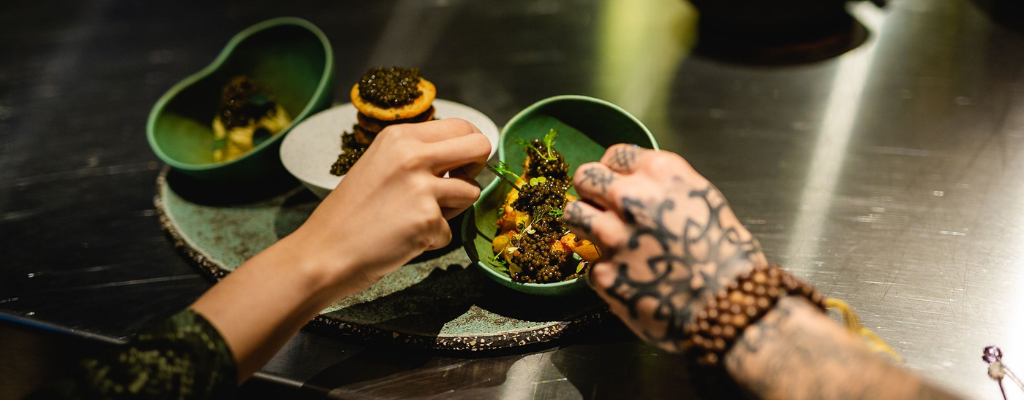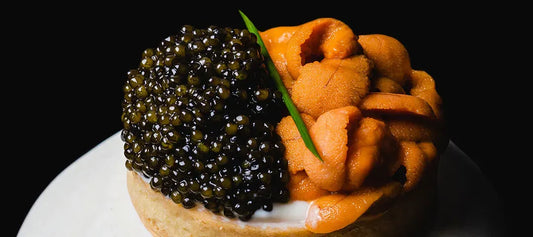
Kaluga Hybrid Caviar: A Beginner’s Guide
Share
What exactly is the kaluga hybrid, and how does the caviar taste compared to the beluga, sevruga, and osetra of the world? In this article, we’ll take a closer look at the freshwater sturgeon species and how its delectable caviar have made it one of the most sought-after today.
The Kaluga sturgeon is considered to be the world’s largest freshwater sturgeon. A predatory fish native to the Amur River basin, the Kaluga sturgeons are capable of growing to sizes of over 18 feet at its biggest. An adult female Kaluga can produce up to 18kg of caviar and are mostly produced in farms where they are more sustainably raised.
The taste that overtook the world

The kaluga hybrid caviar is characterised by its large, firm eggs that range in colour from light to dark grey. Its taste is often described as buttery and nutty, with a smooth and creamy texture.
The caviar has become increasingly popular in recent years due to its unique taste and texture. It is highly prized by connoisseurs of luxury foods, and is often considered a premium alternative to traditional sturgeon caviar. The popularity of Kaluga hybrid caviar has grown in part because of its sustainable production methods, which appeal to environmentally conscious consumers (more on this later).
In terms of market demand, Kaluga hybrid caviar is considered to be one of the top varieties of caviar available today, alongside the more limited beluga, sevruga, and osetra.
However, it is worth noting that caviar remains a luxury food item and is typically more expensive than other types of seafood or meat. As such, it is often consumed in small quantities and reserved for special occasions or high-end dining experiences.
Sustainability matters

The production process of the caviar involves extracting the eggs from the female fish and processing them. The eggs are extracted by massaging the belly of the fish, which stimulates the release of eggs. The eggs are then cleaned and sorted by size and quality. The caviar is then graded based on its colour, texture, and flavour. The grading system is important because it helps to ensure that consumers receive high-quality caviar.
This massaging technique has been one of the more important developments in caviar production, as killing the sturgeons to extract the eggs was the default way of extracting the eggs since people started consuming caviar. Do note that this technique is not done exclusively for kaluga sturgeons, but is now implemented for all types of sturgeons for their caviar.
The more humane and sustainable technique ensures not only the sturgeons’ wellbeing, but also means repeated extraction can be done.
Enjoying the kaluga hybrid

Caviar in general is usually enjoyed in small quantities, either as a topping on a bite-sized cracker or blini (Russian-style mini pancakes), or to top off a seafood-forward dish for an extra burst of flavour. Here are the caviar recipes that we loved to pair with our kaluga hybrid recently.
Serving the caviar on its own typically includes having it on a platter or shallow bowl that sits on top of ice, with the caviar not being directly in contact with the ice. The serving dish should be made out of metal, neither should the serving utensil. The reason for this is that metals such as silver, when come into contact with caviar, will create an unfavourable taste (metallic, acidic).



